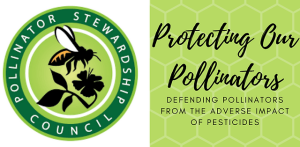Alan Harman
Australian researchers are testing 80 varieties of bush and trees around Australia that assist bees in making honey with medicinal properties similar to the lucrative Manuka product in New Zealand.
Initial results from a five-year research project due to run through 2019 have found some types of Australian honey that can compete with New Zealand’s Manuka honey when it comes to fighting bacteria.
The researchers predict their results will result in a premium price for Australian Leptospermum honey for Australian beekeepers, as has been the case in New Zealand.
The research is being followed closely by Aussie beekeepers who now look enviously across the Tasman Sea where their Kiwi counterparts get A$100 a kilogram for Manuka honey while they get A$5.50 to A$7.00 a kg.
Global demand for the medical honey is quickly outstripping New Zealand’s supply of Manuka honey and the Australians are testing the potential of honey derived from related trees in a five-year project funded by the Rural Industries Research and Development Corp., Horticultural Australia Ltd., Capilano Honey Ltd. and Comvita Ltd.
New Zealand Manuka (Leptospermum scoparium) honey is a potent killer of a range of bacterial – including antibiotic-resistant – pathogens.
This antimicrobial activity is attributed to an unusually high level of methylglyoxal (MGO).
The research at University of Technology Sydney is testing highly active Australian Leptospermum honey against common problematic bacterial and fungal pathogens, including those that are resistant to a range of antibiotics.
Manuka is native only to New Zealand and Australia. It is grown as an ornamental garden plant in many countries, with cultivars widely available. In South Africa, the species is listed as “under surveillance” under the Conservation of Agricultural Resources Act. It is also considered a possible threat in Hawaii, where it appears to spread more quickly than the related Leptospermum laevigatum.
What makes the Australians optimistic about their chances of developing a medicinal honey industry is that New Zealand, which dominates the world trade, has only two types of Leptospermum tree.
Australia has more than 80 – largest diversity of Leptospermum plants in the world – and the university will be testing all of them for the first time.
Beekeepers are being asked to provide 200-500-gram samples of honey from bees visiting leptospermum plants along with information about the collection location and plant samples.
That can be a big ask in a beekeeping community that likes to keep its best sites secret.
Project leader Prof. Liz Harry tells The Land agricultural weekly newspaper that working with co-investigators from the University of Sydney and the University of the Sunshine Coast, the project will systematically identify which species make the most therapeutically active honey and where they are located in Australia.
“We will correlate the chemical make-up of the Australian honeys with their antibacterial activity, measuring the MGO and other chemicals known to be important components,” she says.
“We will use a range of bacteria in these tests, including multi-antibiotic resistant superbugs such as MRSA and Pseudomonas aeruginosa, also measuring the ability of the bacteria to become resistant.”
The team is also looking at the interplay of Australian honey with drugs commonly used to treat skin and wound infections.
“Previous research has shown honey can re-sensitize bacteria to drugs they have become resistant to, an effect also seen with fungal infections,” Harry says. “We will test whether Australian honeys can do this as well.”








